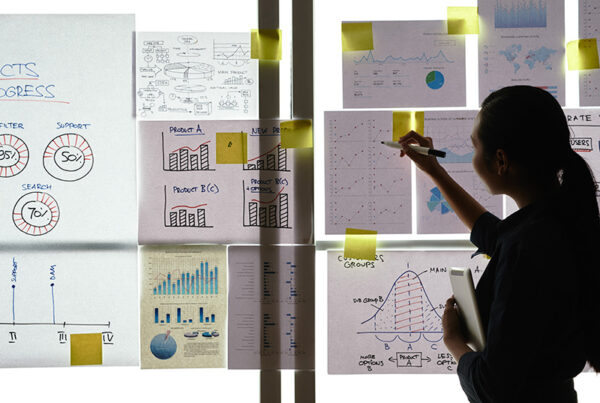Summary
Implementing a usage-based pricing model successfully demands a unified approach across the entire organization, extending beyond just finance or engineering. Every department, from sales to customer success, must fully grasp and advocate for the model’s intricacies. This collaborative effort ensures smooth operations, effective customer engagement, and sustained growth, transforming how your business monetizes its offerings.
Key Takeaways
- Success with usage-based pricing requires organization-wide understanding and belief, not just concentration in a single department.
- Sales teams must develop new skills for complex contract negotiation, usage forecasting, and product-led growth to effectively sell usage-based products.
- Product management is crucial for defining value metrics, pricing, packaging, and billing policies, guiding the company’s monetization strategy.
- Engineering plays a central role by developing robust consumption metering, customer notifications, and data feeds essential for billing systems.
- Finance and accounting teams navigate significant complexities in billing, accounts receivable, revenue recognition, and investor metric calculation with usage-based models.
- Customer Success Managers are vital for educating customers, assisting with forecasting, and driving upsells and cross-sells to boost retention and expansion.
Creating a Consumption Culture
The Role of Sales, Product, and Finance in Implementing a Usage-Based Pricing Model
Usage-based pricing models are typically championed by the finance or engineering organization due to the complex nature of the operations that need to be performed. However, success with usage-based pricing will not occur if the knowledge and passion around the model are concentrated in a single department. Successfully scaling the usage-based pricing model requires the whole business to understand and believe in the model. Everyone from the Human Resources professionals managing sales compensation plans to the Customer Success Managers answering questions about the monthly bill need to understand the nuts and bolts of how usage-based pricing works. The roles of each major department within a typical SaaS and cloud organization are outlined below:
Sales
Complex Contract Negotiation and Forecast Modeling

Sales Team Role in Usage-Based Pricing
The sales organization will need to build new skills to sell products with usage-based pricing. Account executives will need to learn how to engage users in a product led growth model. Solution consultants will need to learn how to advise customers on forecasting usage patterns. Deal desk will need to learn how to structure complex contracts with prepaid credits or spend commitments.
- Trial Conversions – Learn the best strategy to engage and convert customers who signed up for a free-trial or monthly plan (product-led growth) into long-term customers with a formal contract.
- Deal Structures – Negotiate complex agreements with prepaid units, monthly minimums, or spend commits. Reps need to learn how to educate buyers on how the pricing and contracts terms work.
- Forecasting Usage – Help customers to estimate consumption patterns over the life of the contract to ensure the customer gets the best discount without over-committing and losing money.
- Compensation Models – Rev Ops will need to design commission plans that incentivize reps to secure contract minimums, but also provide upside for additional growth throughout the life of the contract.
Product Management
Pricing, Packaging, and Policies

Product Management’s Role in Usage-Based Pricing
Product managers often take a leadership role in defining the monetization strategy for the company. They will need to define value metrics, discounting models, packaging configurations, and billing policies. In a product-led growth model they will also be responsible for designing a low-friction acquisition model and customer experience that leads to rapid growth.
- Generating PQLs – Attract new product qualified leads and encourage users to experiment with the product through free trial programs and pay-as-you-go monthly plans.
- Pricing & Packaging – Identify the best value metrics to monetize the value proposition. Design the the optimal packaging configurations to sell. Determine the best presentation model for customers.
- Discounting & Contracts – Work closely with RevOps to optimize the discounting strategies and contract structures needed to incentivize growth in larger accounts.
- Billing Policies – Define overage fees for monthly minimum plans, expiration dates for prepaid credits, usage caps for stair step subscriptions. Differentiate between billable and non-billable events.
Engineering
Consumption Metering and Data Mediation

Development & Engineering Team’s Role in Usage-Based Pricing
In most companies developers are not involved with billing and revenue cycles. However, at organizations with usage-based pricing, engineering will play a central role. In some cases, the engineers might be responsible for designing and developing the end-to-end metering, rating, and billing system. At a minimum, developers will need to build capabilities within the product to monitor the amount of usage being consumed every month and feeding it to the billing system.
- Consumption Metering – Embedding telemetry into the product(s) to meter precisely how much of each customer is consuming during the billing period.
- Customer Notifications – Notifying customers in real-time when certain spend or usage thresholds are crossed. Offer automated workflows to respond to notifications.
- Performance Management – Building governors to throttle high usage accounts during peak loads. Workflows to suspend accounts for policies violations or non-payment.
- Data Feeds – Pushing metered consumption data to downstream systems such as billing applications, data warehouses, and cloud marketplaces through APIs or integration.
Finance and Accounting
Usage-Based Billing and Revenue Accounting

Finance & Accounting Team’s Role in Usage-Based Pricing
Usage-based pricing adds significantly more complexity to the routine, month-end close processes that finance and accounting teams have to manage. Each month they will need to take a feed of raw metered data and quickly convert it into invoices, journal entries, and investor reports. More importantly, finance will need to aid everyone from the customer’s AP department to their investor’s financial analysts in understanding the data.
- Billing – Invoicing customers will be a much heavier lift with usage-based pricing models. Metered consumption data needs to fed through a rating engine to calculate line items based upon a complex mix of discount schedules, contract structures, and billing policies.
- Accounts Receivable – The volume of customer inquiries and disputes will be significantly higher for collections teams. AR will need to develop more detailed documentation and talk tracks to educate customers on the math behind complex billing calculations and rating tables.
- Revenue Recognition – Technical accountants will need to define policies for how to recognize revenue associated with contracts for which there is a little guidance from GAAP accounting boards. Examples include agreements with prepaid credits and monthly minimums.
- Investor Metrics – Venture capital and Wall Street analysts will want to review common operating metrics such as annual recurring revenue, net dollar retention, and total contract value. The approach to calculating these metrics with usage-based pricing is less standardized.
Customer Success
Billing Inquiries and Dispute Resolution

Customer Success Team’s Role in Usage-Based Pricing
As the owner of the day-to-day relationship with the account, Customer Success will play a critical role in adoption, growth, and satisfaction of customers. Customer Success Managers will need to excel at educating customers on pricing models, consulting buyers on forecasting strategies, and expanding into new business units with upsell opportunities.
- Education – Usage-based pricing can be confusing and intimidating. CSMs will need to continually educate customers on the nuances of pricing, discount models, contract structures, and billing policies to minimize confusion and distrust in the relationship.
- Forecasting – Help the customer to maintain an accurate forecast model for future consumption. Accurate forecasts help ensure that the customer is not underestimating so they receive the highest discount, but also not overestimating and wasting funds on overage fees.
- Upsells – ARR and net retention metrics are driven by continued expansion bookings within major accounts. CSMs will need to gain introductions to new business units to push further adoption of existing products as part of the land and expand strategy.
- Cross-Sells – As the business grows and new products are introduced, CSMs will need to partner with sales in efforts to cross-sell existing users on the new offerings.
- Retention – Minimize churn and maximize renewal rates by ensuring the customer is receiving the desired business value and escalating issues that could potentially result in a cancellation.
Frequently Asked Questions
Usage-based pricing (UBP), also known as metered billing or pay-as-you-go, charges customers based on their actual consumption of a product or service, rather than a fixed recurring fee. Unlike traditional subscription models that offer predictable, flat rates for access, UBP ties cost directly to value received, allowing for greater flexibility and scalability for customers, but potentially more variable revenue for providers.
Cross-functional collaboration is paramount because usage-based pricing impacts nearly every department. Product teams define metrics, engineering implements metering, finance handles billing and forecasting, sales sells the value, and customer success supports adoption. Without alignment on metrics, data collection, billing logic, and customer communication, companies risk inaccurate billing, customer dissatisfaction, and revenue leakage.
Key teams include Product (defining usage metrics and value), Engineering (instrumenting usage data collection and ensuring accuracy), Finance (setting pricing, billing, revenue recognition, and forecasting), Sales (communicating value and selling the model), Marketing (positioning and communicating pricing changes), and Customer Success (onboarding, supporting usage, and addressing billing queries). All must work together to ensure a cohesive strategy and execution.
Challenges often include accurately measuring and collecting usage data, defining clear and fair pricing metrics, aligning internal teams on strategy and execution, forecasting revenue accurately, managing customer expectations regarding variable bills, and integrating billing systems with product usage data. Disagreements between finance and product on pricing metrics can also be a significant hurdle.
Sales compensation for UBP should incentivize both initial customer acquisition and long-term usage growth. Common approaches include a commission on initial committed spend, a percentage of actual usage over a period, or a component tied to customer retention and expansion. It’s crucial to align sales incentives with customer success and overall company growth, rather than just initial contract size.
To effectively manage usage-based pricing, companies typically rely on specialized billing and subscription management platforms that can ingest usage data, apply complex pricing logic, generate invoices, and handle revenue recognition. Additionally, robust data analytics tools are crucial for monitoring usage patterns, forecasting, and identifying opportunities for optimization and customer engagement.
Conclusion
Ultimately, the successful adoption and scaling of a usage-based pricing model transcends departmental silos, demanding unified understanding and commitment across the entire organization. When sales, product, engineering, finance, and customer success teams collaborate and internalize the model, businesses can unlock significant growth, enhance customer value, and navigate the complexities of modern monetization with confidence.
You May Also Like
 Net Revenue Retention for Usage-Based Pricing
Net Revenue Retention for Usage-Based Pricing
Net Revenue Retention for Usage-Based Pricing
 Usage-Based Billing for Spend Commitments
Usage-Based Billing for Spend Commitments
Usage-Based Billing for Spend Commitments
 Usage-Based Billing for Monthly Minimum Contracts
Usage-Based Billing for Monthly Minimum Contracts



